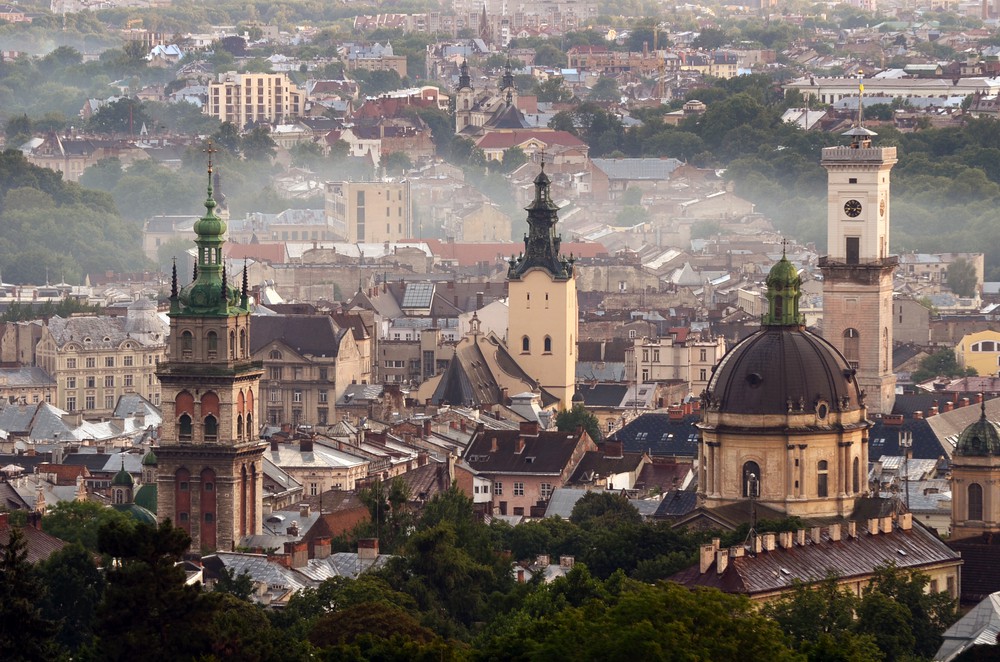By Akanimo Sampson
The conflict and related economic crisis in Ukraine are currently steering people to make unexpected choices to earn their living. To this end, a trumpet player who became an industrial climber and a tech specialist is now producing felt footwear.
This fact and much more, were revealed in a new IOM survey on displacement, presented last week in Kyiv.
Six years on, the conflict in the east of the county has displaced over 1.4 million people. Most of them have found some paid work, and while only seven per cent of the economically active displaced population are unemployed, more than half of those who did find work were unable to find a job for a year or longer. Many have had to make drastic career changes to survive.
Maksym played the trumpet in the Kharkiv Philharmonic Orchestra, but the salary wasn’t enough for his needs. Returning to his native town of Hirnyk in the Donetsk Region was not an option due to lack of work and the general insecurity in the conflict-affected area.
Maksym’s hobby was alpinism, so he decided to try his luck as an industrial climber. After receiving climbing safety equipment as a grant from the International Organisation for Migration (IOM), he now paints and repairs buildings.
Nataliia came to Kharkiv from Donetsk, where, up to 2014 she was a successful website developer, specialising in search engine optimisation. When she got to Kharkiv she knew no one, she had no work, and had to rent an apartment and provide for her elderly mother, and for a daughter who suffers from a heart disease.
Working with wool felt became a solution for Nataliia: first as therapy, then as a business. Nataliia took classes to improve her skills, and IOM granted her a professional sewing machine. Now she produces felt boots, shoes and slippers, selling them worldwide on the Internet.
The general situation with Internally Displaced Persons’ (IDPs) well-being in Ukraine remains complicated. One third of IDPs surveyed by IOM stated that they have funds enough only for food. Only 11 per cent reported having enough funds for basic and other needs and said they were able to save.
The average monthly income per IDP household member has increased from UAH 2,667 (about USD 97) in March to UAH 3,039 (about $115) in June 2019. However, it is still lower than the national Ukrainian average at UAH 4,895 ($186) and the actual subsistence level of UAH 3,761 ($143).
About 10 per cent of unemployed IDPs reported that when they had tried to get a job, they had ended up unpaid or working in conditions significantly worse than promised.
Government support remains the second most frequently mentioned source of income for IDPs. It has crucial importance for the economically inactive IDP population: pensioners, home managers, carers, students and people with disabilities.
“Reintegration of IDPs is one of the priorities of the Government of Ukraine”, said Oksana Koliada, Minister of Veterans Affairs, Temporarily Occupied Territories and Internally Displaced Persons, at the presentation of the IOM report. “The new IOM survey will help us to identify what kind of support and services for IDPs we need to ensure in the near term.”
Deputy Minister of Social Policy of Ukraine Serhii Nizhynskyi noted that gaps in IDP integration remain a challenge. “Knowing the unemployment rates and understanding the obstacles to employment is an important precondition for an effective integration and for countering human trafficking and exploitation”, he said.
IOM has been conducting national surveys on the situation of IDPs in Ukraine since March 2016. In the latest, the 14th round, conducted in April–June 2019 with funding from the US Department of State Bureau of Population, Refugees, and Migration (PRM), a total of 2,401 respondents were interviewed face-to-face, and 4,073 by telephone.
The full report is here: http://ukraine.iom.int/sites/default/files/nms_round_14_eng_web.pdf

